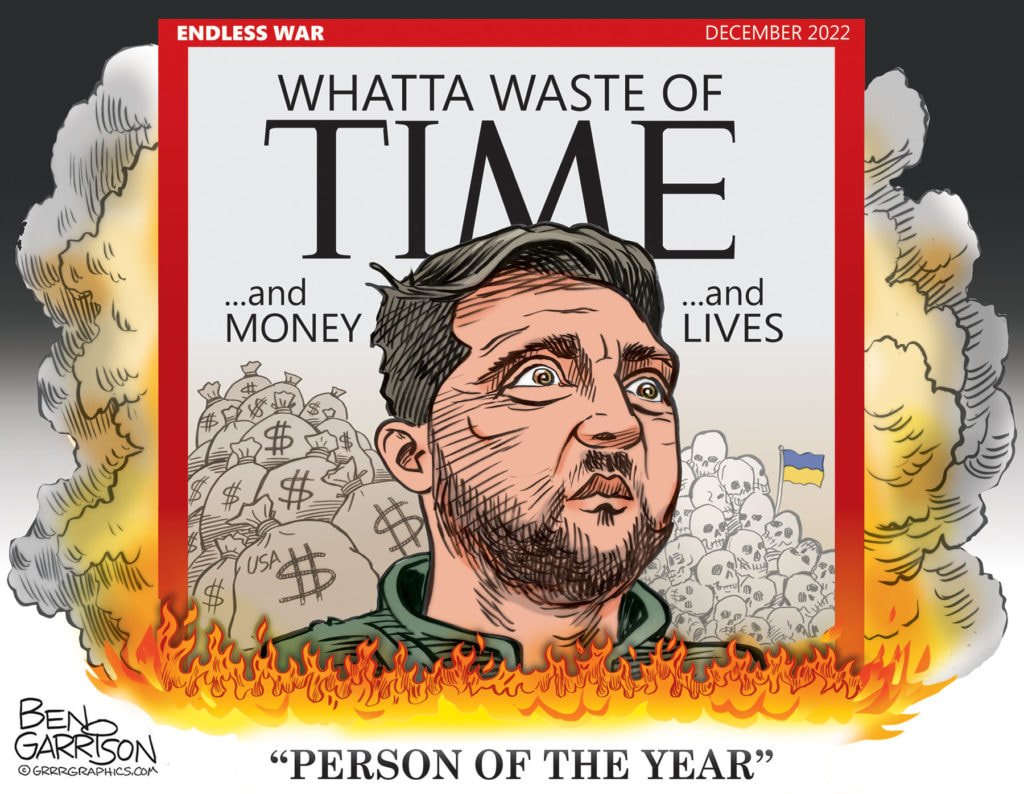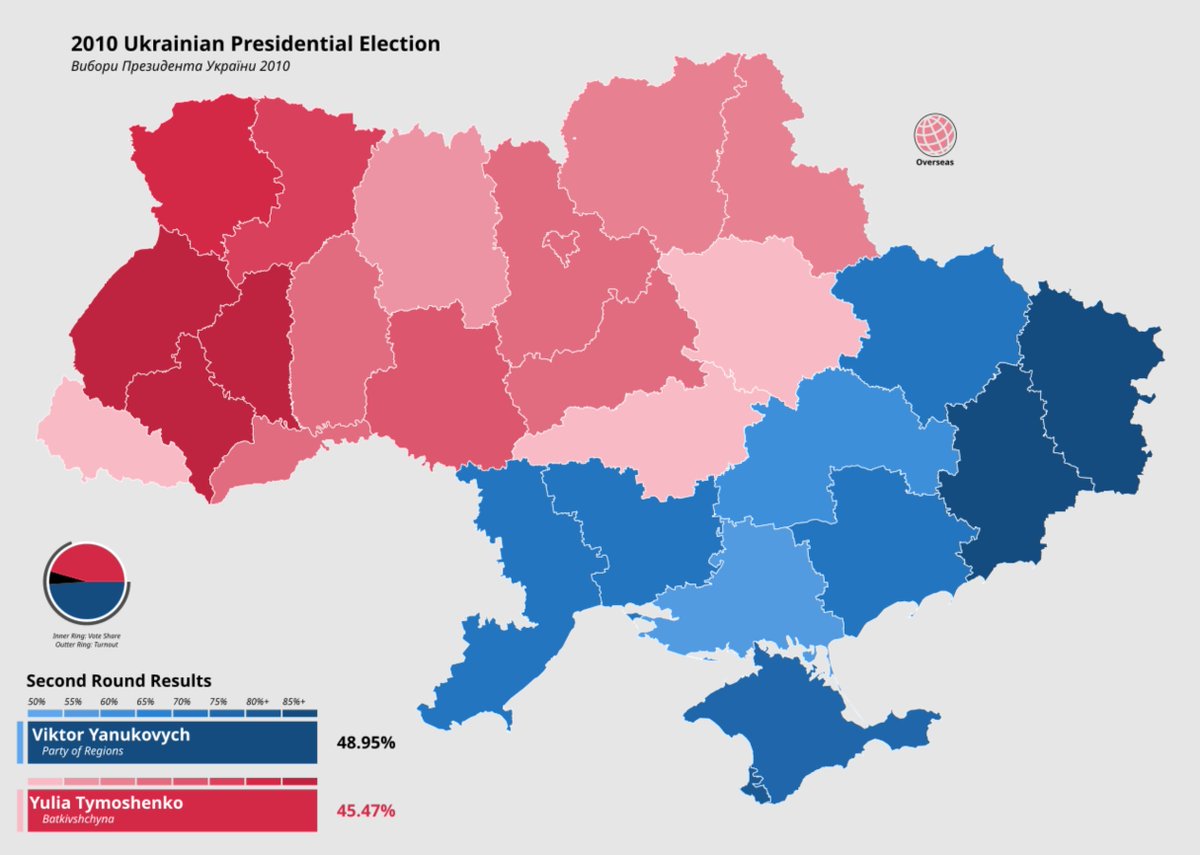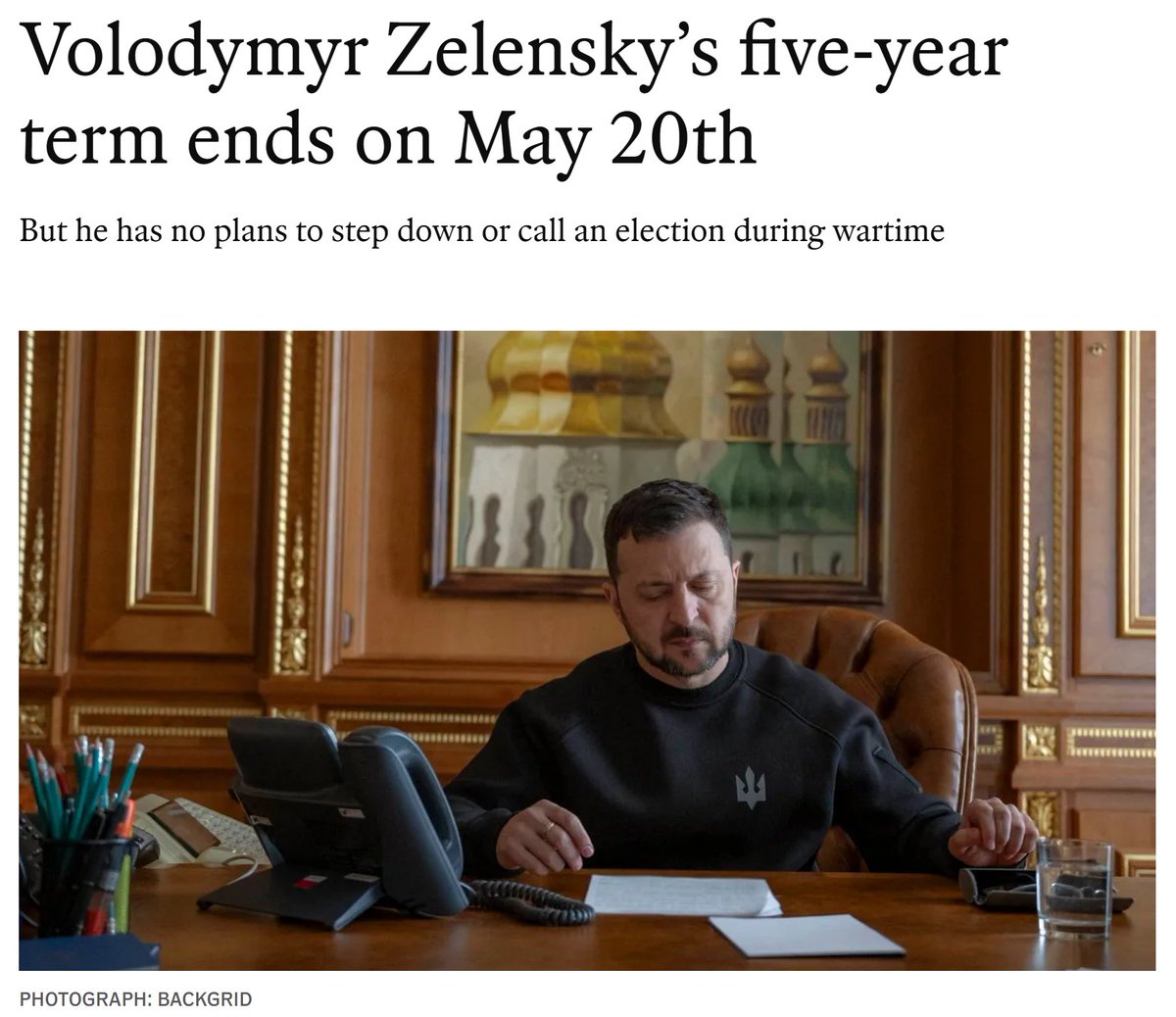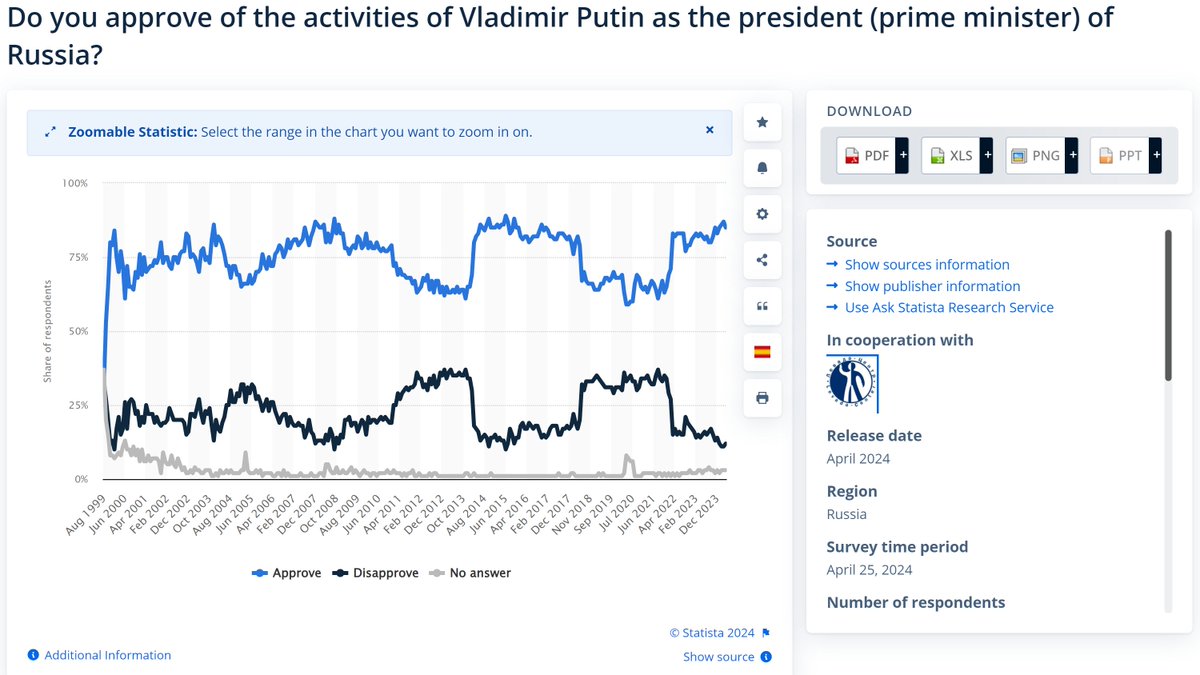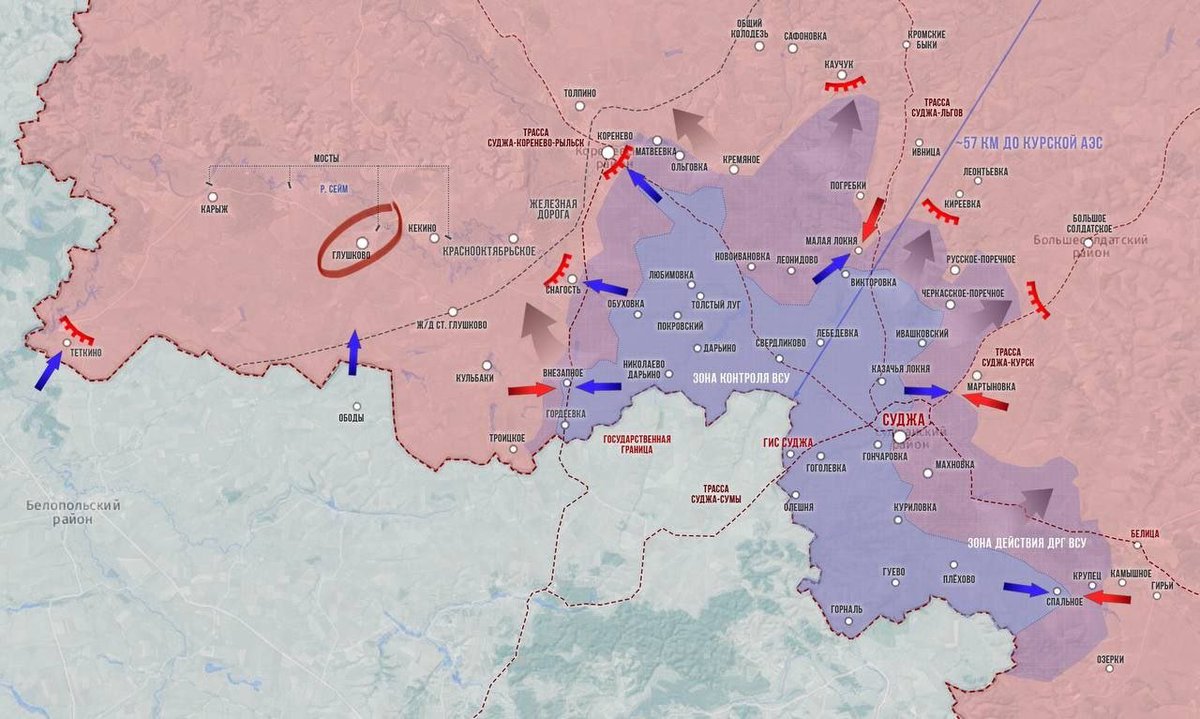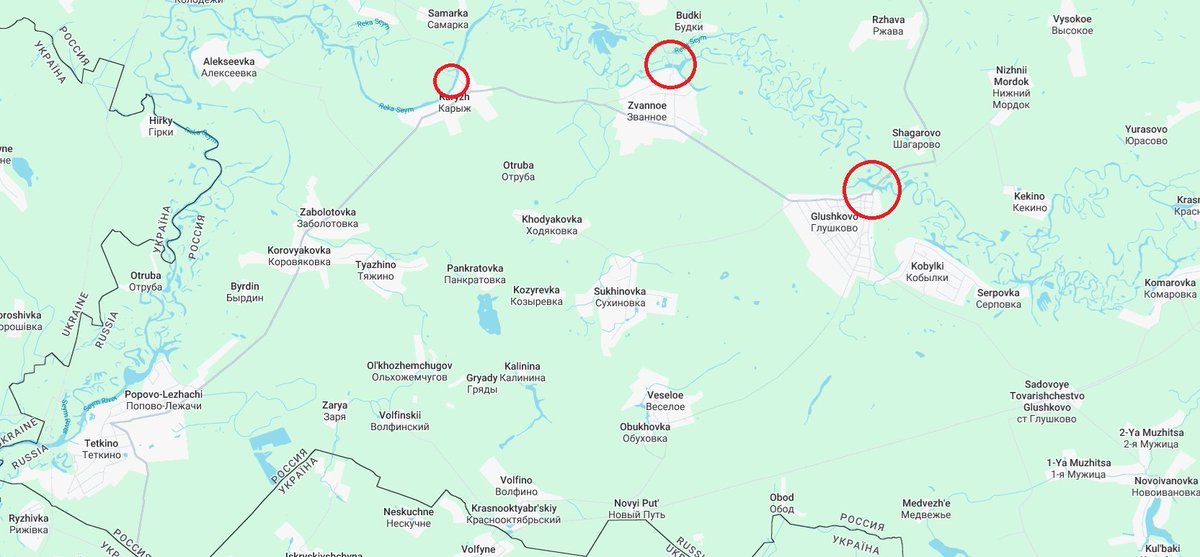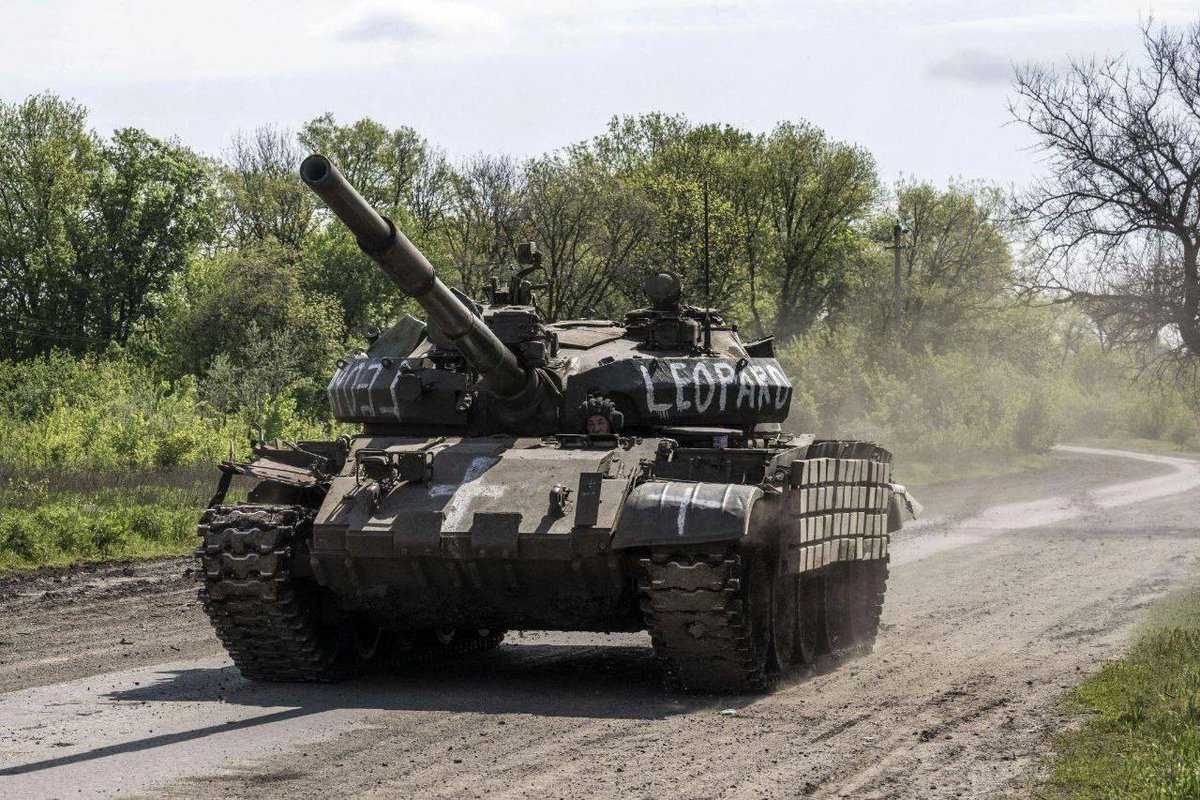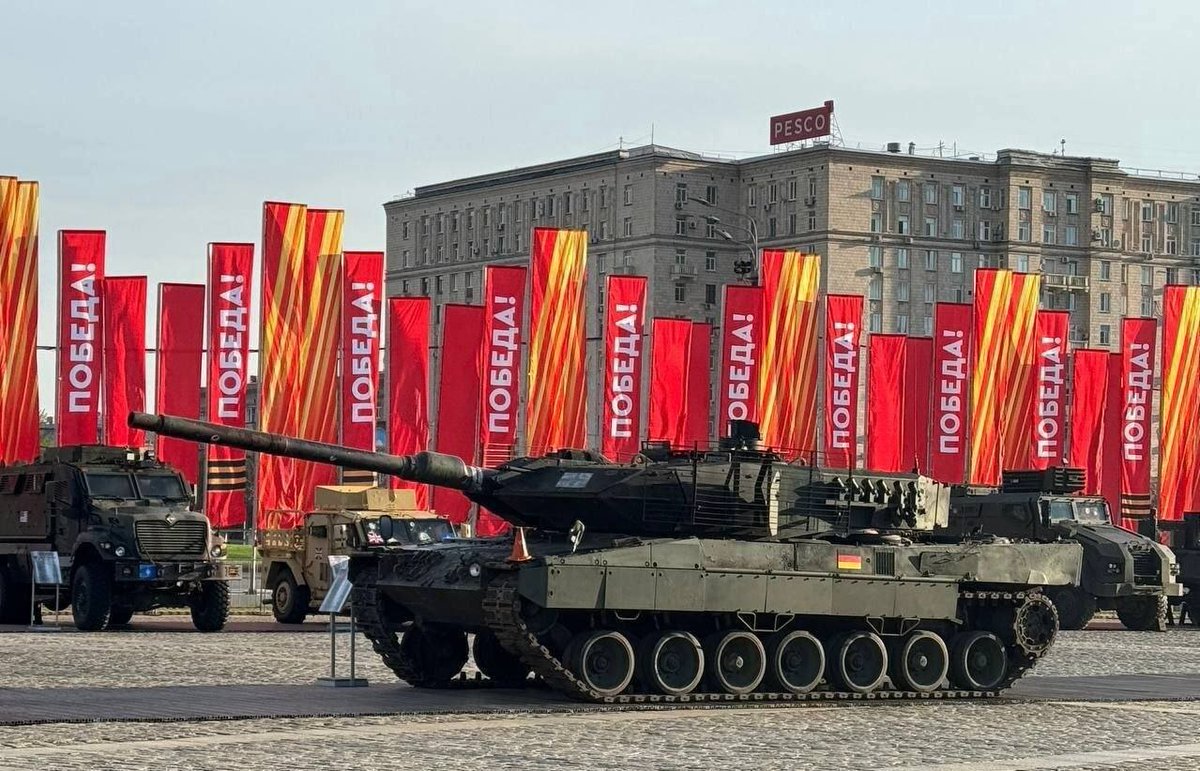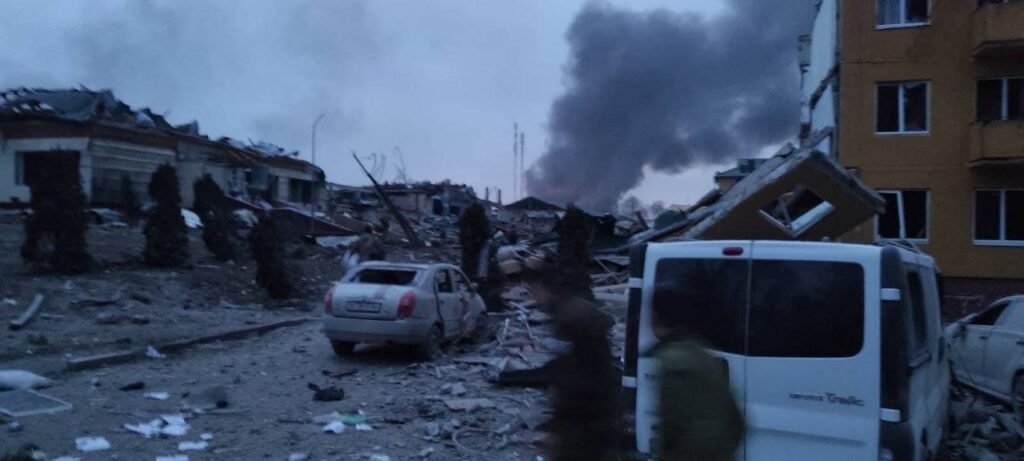Breaking the "Drone Wall"
The latest talking point out of the Ukrainian side is that they don't really need NATO's support any more because they have tons of kill drones and they're so incredibly lethal that's enough to hold off the Russians indefinitely.
Let's examine this.⬇️
First of all, let's examine the kill drone as a weapon system. Generally known as FPV drones, or as I prefer to call them, antitank drones, these are small, simple quadcopter drones equipped with a camera, a radio or wire communications system, and an explosive warhead.
This makes for a new type of weapon system that, rather than being extremely powerful at face value, gains its effectiveness through a combination of smart guidance and ubiquity. They do three things that prewar "legacy" antitank systems do not:
1. They have extremely precise guidance and can be maneuvered to attack weak points on an armored target or pursue dismounted troops into cover;
2. They have onboard sensors and sustained flight capability, and are capable of not just attacking targets outside of the operator's line of sight but actively conducting reconnaissance; and
3. They are relatively light and cheap, with two or three kill drones fitting into the size and weight factor of a single old-style antitank missile, and thousands of drones stamped out in Chinese factories daily on no-questions-asked contracts to be jury-rigged to ubiquitous Soviet-era antitank warheads.
These weapons do, however, have drawbacks compared to conventional antitank systems.
1. Radio-controlled models are vulnerable to electronic countermeasures;
2. They have limited lift capability and as such their warheads are generally relatively weak, often simply repurposed single-stage RPG-7 shells or purpose-built charges that are little better;
3. They fly relatively slowly and can be, and frequently are, defeated successfully by defensive fire from determined dismounted troops; and
4. They "fire" extremely slowly, as each drone must be manually prepped, linked to a command system, checked out, flown out to a target that could be several kilometers away, and then carefully maneuvered into the target for maximum effect. The rate of fire for a single drone team is thus measured in minutes per round rather than rounds per minute. Engagements where you see multiple drones hit in quick succession are the result of multiple teams attacking a single target or group of targets.
The Russians and to a lesser extent the Ukrainians have implemented countermeasures to lessen their forces' vulnerability to these weapons, generally consisting of ECM systems, defensive fire (skeet shooting has become a matter of great tactical relevance lately), and elaborate "cope caging" that would have drawn extreme mockery a few years ago and which still does in the circles of people who aren't going to survive the first battle of the next war. As such, the probability of kill (PK) of a given antitank drone launch at the moment is, optimistically, about 10% against an appropriately prepared armored vehicle.
And now, my readers, we see the inherent weakness of a military doctrine centered around these weapons. Recall what I previously said about the slow rate of fire of drone teams and compare it to the low PK to be expected of any system which an adaptive enemy has had a chance to respond to. Assuming a PK of about 8% and a five-minute engagement cycle, any given Russian armored vehicle can expect to have about one "drone-hour" of combat lifetime under attack by these systems. Thus a single vehicle being engaged by six teams, for instance, can expect to last ten minutes before being knocked out.
This combat model is borne out by numerous engagements in which Russian units have pushed through drone attack with few to modest losses despite clearly being under attack by multiple teams for extended periods of time. The "drone wall" tactic does, however, create a sufficiently dense swarm of drones at the point of contact to render advances at the platoon level largely a matter of luck and deliberate company-scale attacks a bloody proposition for the chance of little ground gained.
What about larger-scale attacks, though?
Let's run a little wargame. In this scenario, a Ukrainian division (let's say one of their new "tactical corps" that's effectively a divisional unit) is defending against a Russian divisional attack. The Ukrainian unit has deployed into a formation designed to maximize the intensity of antitank drone fire to be directed against an attack at any point on the front - very similar to AFU deployments on the ground right now - with two defensive lines of dismounted infantry in closely-spaced strongpoints and a final "line" of mechanized reserves to bottle up any breakthroughs. A mechanized Russian division has been tasked to smash its way through.
The exact geometry is also noted on the graphic below, but I'll state it here for completeness' sake - the AFU division is occupying a 27km front with three brigades each occupying nine kilometers. The two infantry defensive lines are each composed of platoon strongpoints located one kilometer apart, with the second line positioned three kilometers to the rear of the first line and able to support it with drone fire under intense combat conditions.
A few notes on the rules here.
1. Every Ukrainian strongpoint is assumed to contain one drone team with an engagement range under "assault" conditions of five kilometers. Each team will fire once every five minutes. Firing strongpoints will be marked with a red box in the graphics.
2. As I pointed out above, Russian vehicles have a combat lifespan of one "drone-hour." As such it will take twelve "shots" from a single drone team to kill a vehicle, or one shot from twelve drone teams.
3. I am assuming that a Russian unit will take 30 minutes to move 3-5 kilometers tactically, accounting for en-route mine clearance, etc. Moving through cleared areas will of course be quite fast.
4. Ukrainian strongpoints attacked from the front must be deliberately assaulted, which will take 30 minutes at 3:1 odds. Strongpoints that have been flanked can be hastily assaulted in the same turn as movement.
5. Ukrainian strongpoints in close combat with superior Russian units are suppressed and cannot fly off drones. This will be marked with a black box in the graphics.
6. Ukrainian artillery has largely been silenced and the Russians have stiff fire superiority and their own drones searching the battlefield. Once a Ukrainian drone team opens fire it will be spotted and destroyed by Russian indirect fire within two hours. Strongpoints with dead drone teams will be crossed out and will not fire, but must still be assaulted and cleared of their infantry for the Russians to progress.
7. The Ukrainian reserves cannot simply blitz to the breakthrough sector - they must be alerted and then move out, under attack by Russian interdiction fires and clearing scatter-mine obstacles on the way. Thus they are going to move relatively slowly.
8. The Russians have achieved operational surprise and there is no large AFU reserve force waiting for the assault. This isn't particularly unusual, a similar situation occurred at the start of the Battle of Avdeevka and the Kharkov incursion last year. The Russians seem to be able to pretty reliably mass large forces for operations if need be, without Ukraine or NATO intelligence noticing.
Simple enough? Maybe I should put in an application at Milton-Bradley!
Let's begin - I'll now transition to thread format.⬇️
The latest talking point out of the Ukrainian side is that they don't really need NATO's support any more because they have tons of kill drones and they're so incredibly lethal that's enough to hold off the Russians indefinitely.
Let's examine this.⬇️
First of all, let's examine the kill drone as a weapon system. Generally known as FPV drones, or as I prefer to call them, antitank drones, these are small, simple quadcopter drones equipped with a camera, a radio or wire communications system, and an explosive warhead.
This makes for a new type of weapon system that, rather than being extremely powerful at face value, gains its effectiveness through a combination of smart guidance and ubiquity. They do three things that prewar "legacy" antitank systems do not:
1. They have extremely precise guidance and can be maneuvered to attack weak points on an armored target or pursue dismounted troops into cover;
2. They have onboard sensors and sustained flight capability, and are capable of not just attacking targets outside of the operator's line of sight but actively conducting reconnaissance; and
3. They are relatively light and cheap, with two or three kill drones fitting into the size and weight factor of a single old-style antitank missile, and thousands of drones stamped out in Chinese factories daily on no-questions-asked contracts to be jury-rigged to ubiquitous Soviet-era antitank warheads.
These weapons do, however, have drawbacks compared to conventional antitank systems.
1. Radio-controlled models are vulnerable to electronic countermeasures;
2. They have limited lift capability and as such their warheads are generally relatively weak, often simply repurposed single-stage RPG-7 shells or purpose-built charges that are little better;
3. They fly relatively slowly and can be, and frequently are, defeated successfully by defensive fire from determined dismounted troops; and
4. They "fire" extremely slowly, as each drone must be manually prepped, linked to a command system, checked out, flown out to a target that could be several kilometers away, and then carefully maneuvered into the target for maximum effect. The rate of fire for a single drone team is thus measured in minutes per round rather than rounds per minute. Engagements where you see multiple drones hit in quick succession are the result of multiple teams attacking a single target or group of targets.
The Russians and to a lesser extent the Ukrainians have implemented countermeasures to lessen their forces' vulnerability to these weapons, generally consisting of ECM systems, defensive fire (skeet shooting has become a matter of great tactical relevance lately), and elaborate "cope caging" that would have drawn extreme mockery a few years ago and which still does in the circles of people who aren't going to survive the first battle of the next war. As such, the probability of kill (PK) of a given antitank drone launch at the moment is, optimistically, about 10% against an appropriately prepared armored vehicle.
And now, my readers, we see the inherent weakness of a military doctrine centered around these weapons. Recall what I previously said about the slow rate of fire of drone teams and compare it to the low PK to be expected of any system which an adaptive enemy has had a chance to respond to. Assuming a PK of about 8% and a five-minute engagement cycle, any given Russian armored vehicle can expect to have about one "drone-hour" of combat lifetime under attack by these systems. Thus a single vehicle being engaged by six teams, for instance, can expect to last ten minutes before being knocked out.
This combat model is borne out by numerous engagements in which Russian units have pushed through drone attack with few to modest losses despite clearly being under attack by multiple teams for extended periods of time. The "drone wall" tactic does, however, create a sufficiently dense swarm of drones at the point of contact to render advances at the platoon level largely a matter of luck and deliberate company-scale attacks a bloody proposition for the chance of little ground gained.
What about larger-scale attacks, though?
Let's run a little wargame. In this scenario, a Ukrainian division (let's say one of their new "tactical corps" that's effectively a divisional unit) is defending against a Russian divisional attack. The Ukrainian unit has deployed into a formation designed to maximize the intensity of antitank drone fire to be directed against an attack at any point on the front - very similar to AFU deployments on the ground right now - with two defensive lines of dismounted infantry in closely-spaced strongpoints and a final "line" of mechanized reserves to bottle up any breakthroughs. A mechanized Russian division has been tasked to smash its way through.
The exact geometry is also noted on the graphic below, but I'll state it here for completeness' sake - the AFU division is occupying a 27km front with three brigades each occupying nine kilometers. The two infantry defensive lines are each composed of platoon strongpoints located one kilometer apart, with the second line positioned three kilometers to the rear of the first line and able to support it with drone fire under intense combat conditions.
A few notes on the rules here.
1. Every Ukrainian strongpoint is assumed to contain one drone team with an engagement range under "assault" conditions of five kilometers. Each team will fire once every five minutes. Firing strongpoints will be marked with a red box in the graphics.
2. As I pointed out above, Russian vehicles have a combat lifespan of one "drone-hour." As such it will take twelve "shots" from a single drone team to kill a vehicle, or one shot from twelve drone teams.
3. I am assuming that a Russian unit will take 30 minutes to move 3-5 kilometers tactically, accounting for en-route mine clearance, etc. Moving through cleared areas will of course be quite fast.
4. Ukrainian strongpoints attacked from the front must be deliberately assaulted, which will take 30 minutes at 3:1 odds. Strongpoints that have been flanked can be hastily assaulted in the same turn as movement.
5. Ukrainian strongpoints in close combat with superior Russian units are suppressed and cannot fly off drones. This will be marked with a black box in the graphics.
6. Ukrainian artillery has largely been silenced and the Russians have stiff fire superiority and their own drones searching the battlefield. Once a Ukrainian drone team opens fire it will be spotted and destroyed by Russian indirect fire within two hours. Strongpoints with dead drone teams will be crossed out and will not fire, but must still be assaulted and cleared of their infantry for the Russians to progress.
7. The Ukrainian reserves cannot simply blitz to the breakthrough sector - they must be alerted and then move out, under attack by Russian interdiction fires and clearing scatter-mine obstacles on the way. Thus they are going to move relatively slowly.
8. The Russians have achieved operational surprise and there is no large AFU reserve force waiting for the assault. This isn't particularly unusual, a similar situation occurred at the start of the Battle of Avdeevka and the Kharkov incursion last year. The Russians seem to be able to pretty reliably mass large forces for operations if need be, without Ukraine or NATO intelligence noticing.
Simple enough? Maybe I should put in an application at Milton-Bradley!
Let's begin - I'll now transition to thread format.⬇️

Here we see the initial battlefield set. Of note, I'm depicting the Russians tactically by company but will be keeping a more precise tally of assault vehicles destroyed. Russian company icons will be removed as appropriate.
The little ovals are Ukrainian battle positions.
The little ovals are Ukrainian battle positions.

Dust rises on the war-torn steppe as a huge assault force rolls into view - an entire Russian battalion coming on out of the Russian line some way to the south.
The five closest strongpoints launch drones as artillery begins hammering down across the defensive line.
The five closest strongpoints launch drones as artillery begins hammering down across the defensive line.

Five drone teams engaged - three kills, one team destroyed by artillery.
The Russians doze through protective obstacles and engage the center three strongpoints with direct fire, infantry preparing to assault. Now deep in the kill zone, ten drone teams engage across both lines.
The Russians doze through protective obstacles and engage the center three strongpoints with direct fire, infantry preparing to assault. Now deep in the kill zone, ten drone teams engage across both lines.
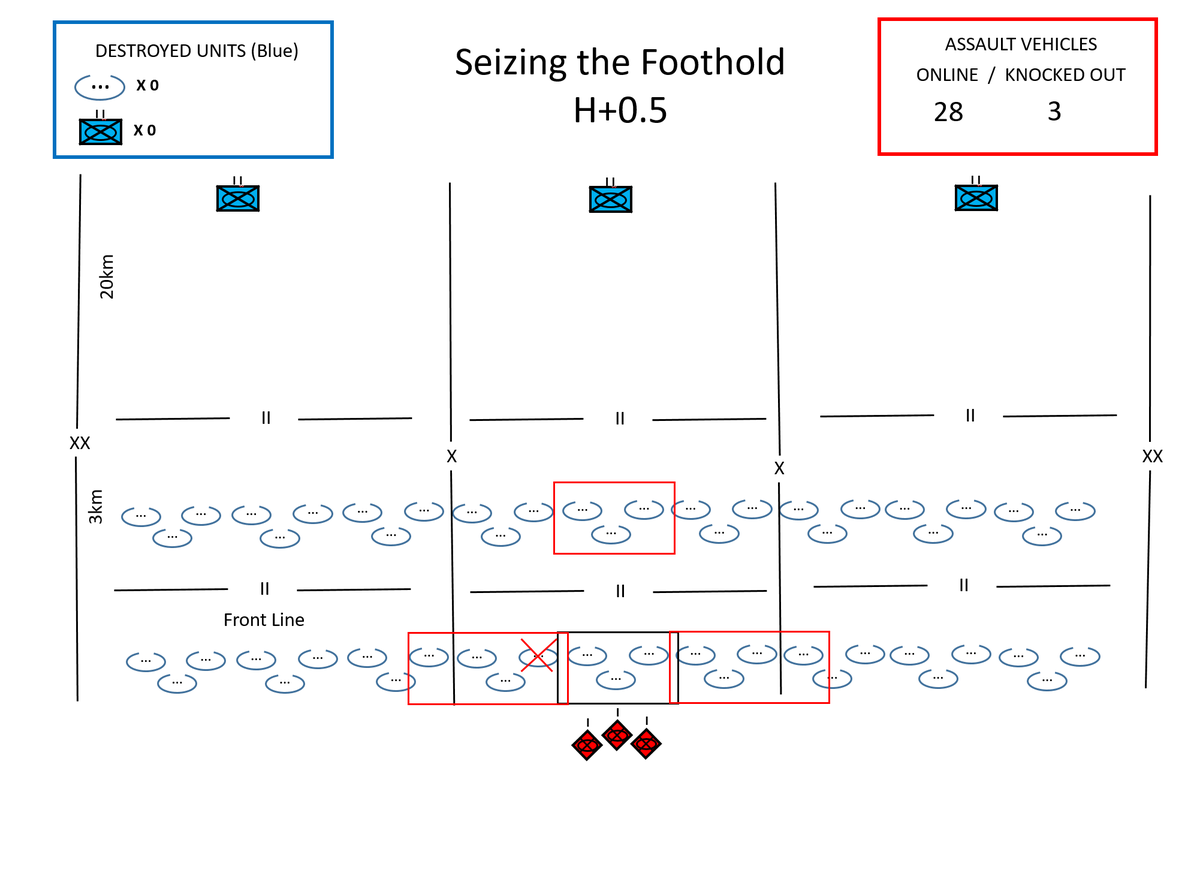
Ten drone teams engaged - five kills, three teams destroyed by artillery.
Under intense drone attack, Russian infantry dismount and storm the center three strongpoints while their vehicles start suppressing the flanking positions.
They must be suicidal, they won't last long.
Under intense drone attack, Russian infantry dismount and storm the center three strongpoints while their vehicles start suppressing the flanking positions.
They must be suicidal, they won't last long.

Ten drone teams fire - five kills, three more teams down to artillery fire
A hoarse voice crackles across the command net - a second wave has broken cover and is charging into the breach, passing a dozen burning vehicles as it comes on heedless of the shrieking drone swarm.
A hoarse voice crackles across the command net - a second wave has broken cover and is charging into the breach, passing a dozen burning vehicles as it comes on heedless of the shrieking drone swarm.
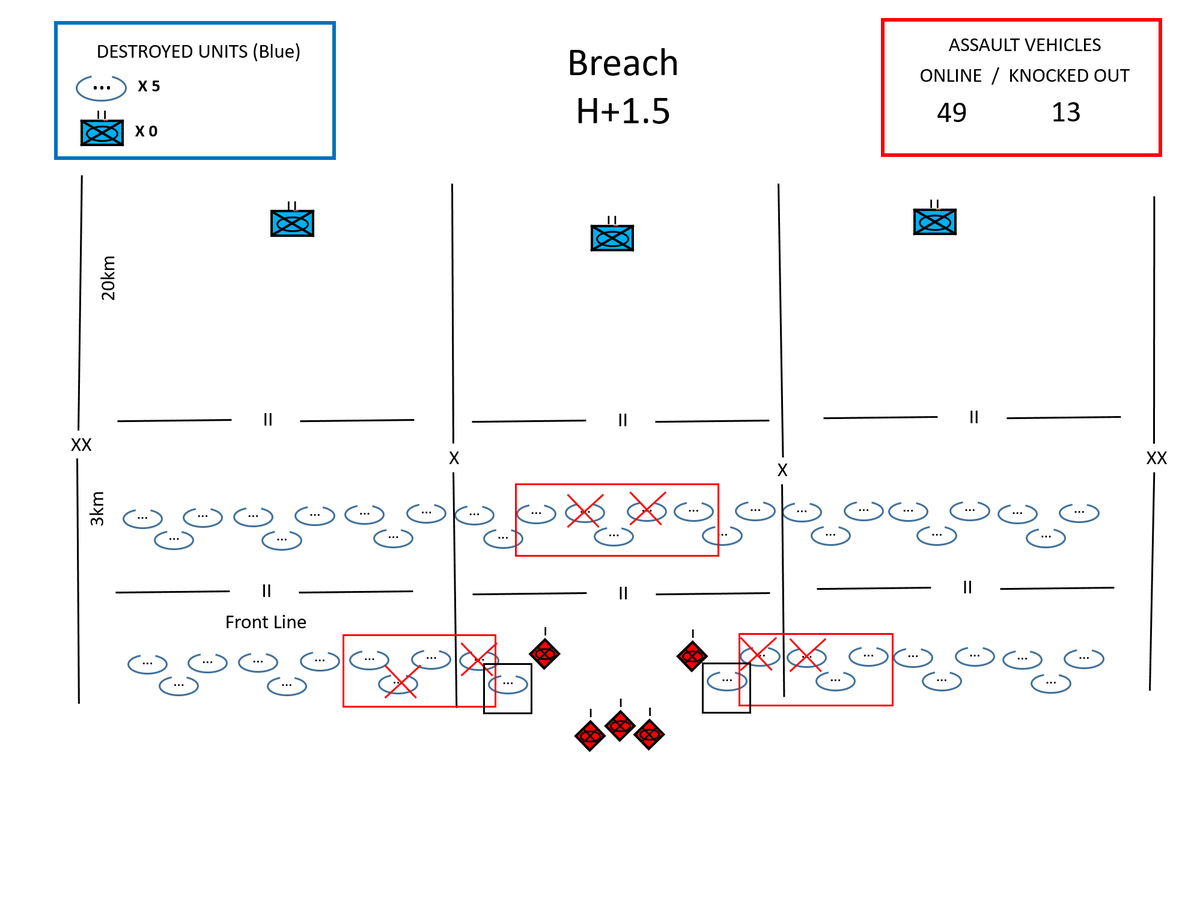
Seven drone teams fire - four kills, three teams knocked out by artillery.
The second battalion hits the rear line and engages with direct fire as the survivors of the first wave hack the hole in the first line wider. The local reserve is now approaching the battlefield.
The second battalion hits the rear line and engages with direct fire as the survivors of the first wave hack the hole in the first line wider. The local reserve is now approaching the battlefield.
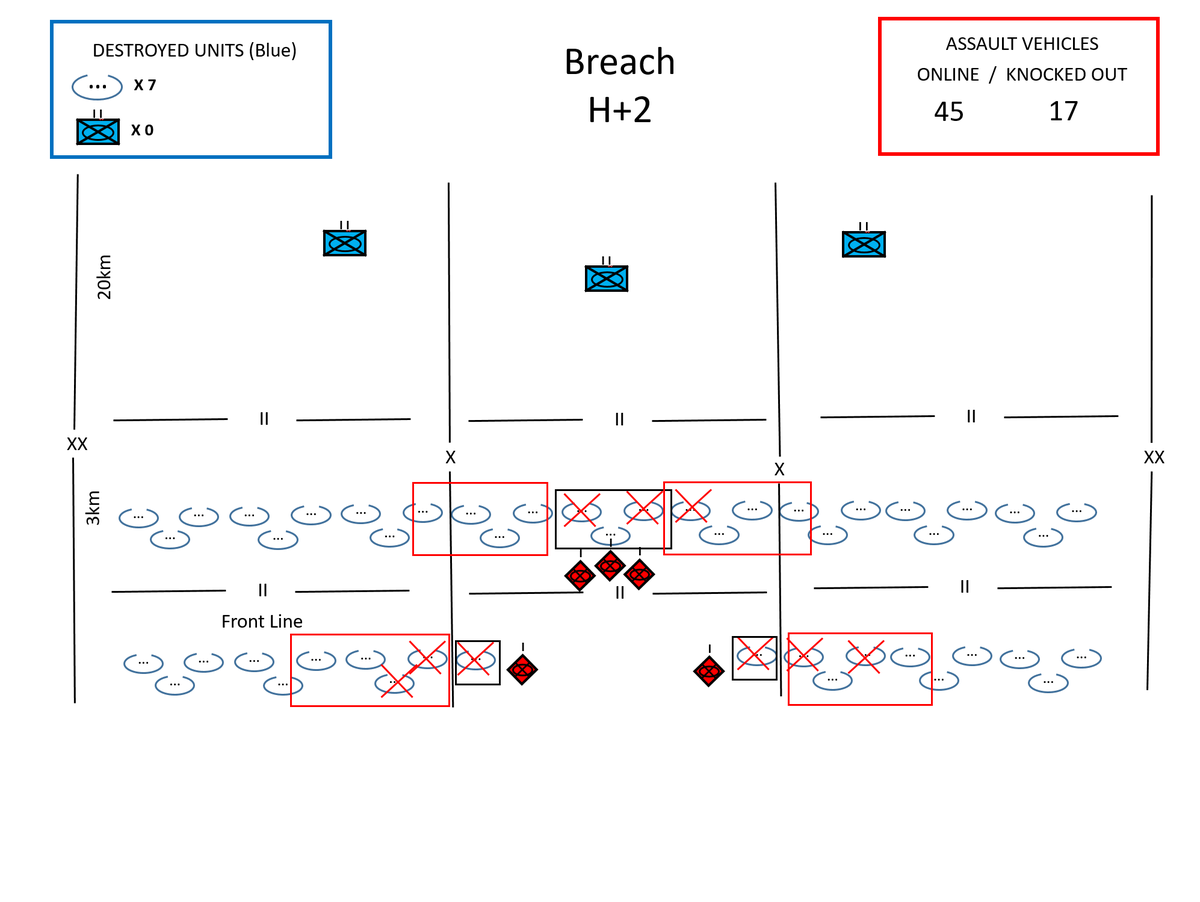
Twelve drone teams fire - six kills, three teams knocked out by artillery.
Under a hail of drones, the second wave plows over the central strongpoints and into open country, trading fire with the lead elements of the local reserve.
The command net crackles again - a third wave!
Under a hail of drones, the second wave plows over the central strongpoints and into open country, trading fire with the lead elements of the local reserve.
The command net crackles again - a third wave!
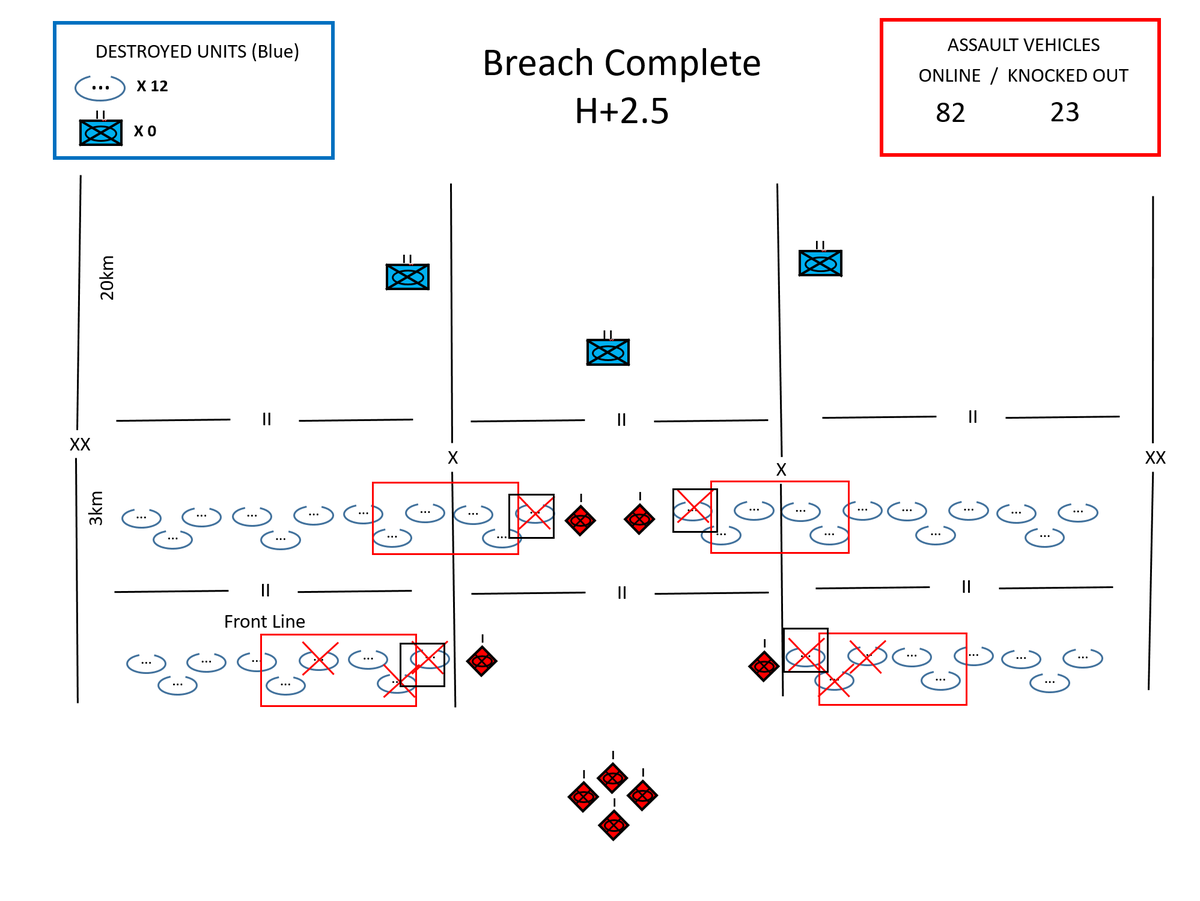
Twelve drone teams fire - six kills, four teams knocked out by artillery.
A tank battle develops in the breach zone as Ukrainian reserves pile in. Numbers are beginning to tell when the command net sparks again - an entire Russian regiment has broken cover and is charging.
A tank battle develops in the breach zone as Ukrainian reserves pile in. Numbers are beginning to tell when the command net sparks again - an entire Russian regiment has broken cover and is charging.
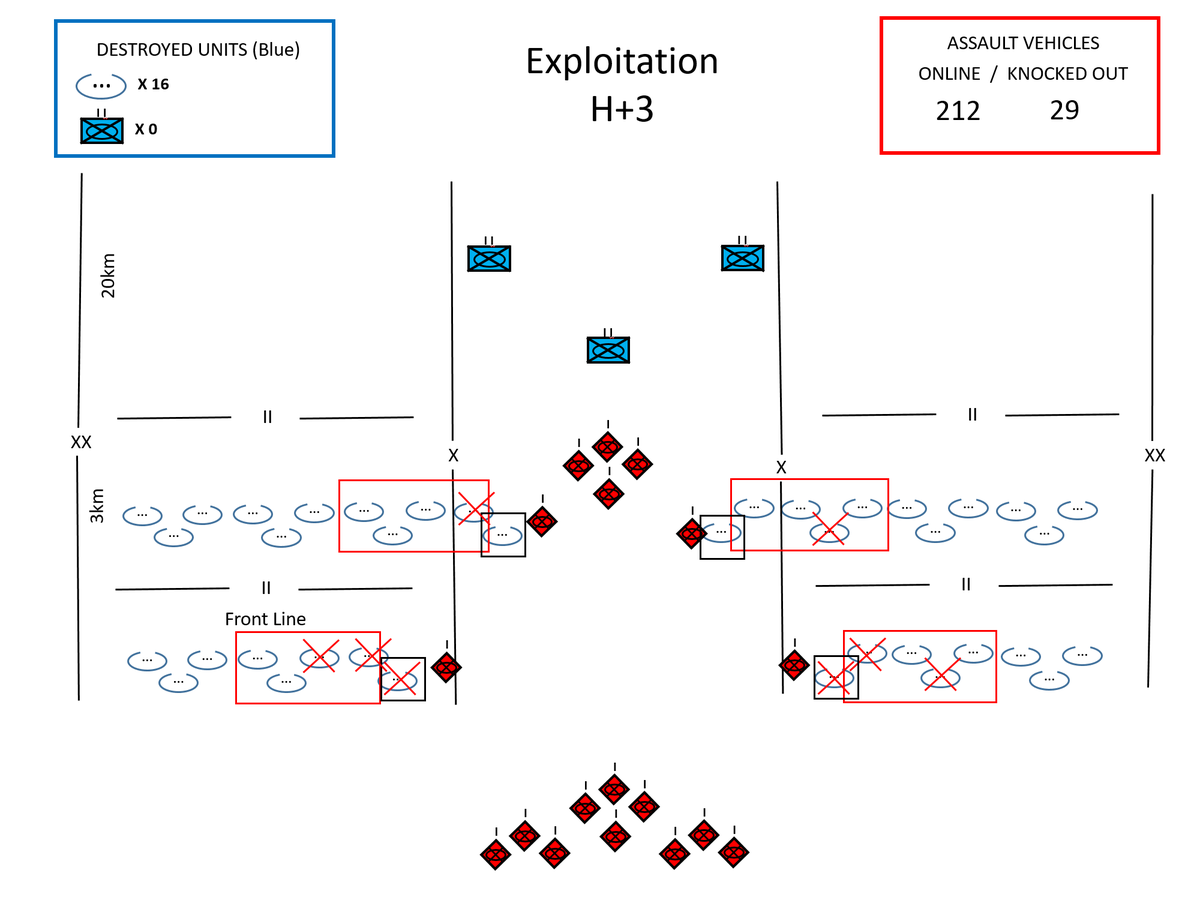
One-hour round: ten drone teams fire for ten kills, five teams KO'd by artillery.
At this point the Russians have forced a ten-kilometer breach through both defensive lines (enough to create a safe corridor), passed a regiment through and defeated the AFU's local reserves.
At this point the Russians have forced a ten-kilometer breach through both defensive lines (enough to create a safe corridor), passed a regiment through and defeated the AFU's local reserves.
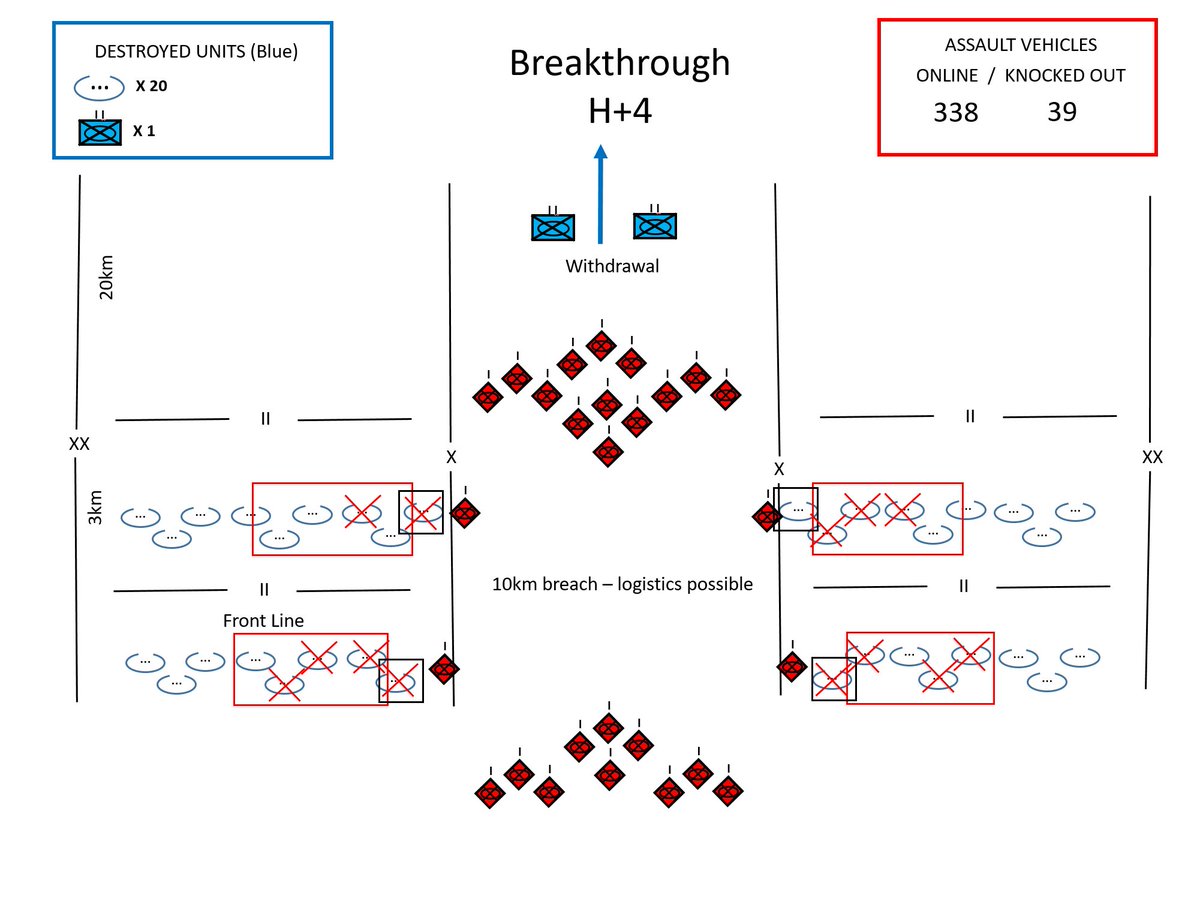
What did it cost the Russians? A battalion-plus destroyed in the breach, with probably 200 casualties.
In return they destroyed three Ukrainian battalions, blew a ten-kilometer hole in what was billed as an impenetrable defensive line and re-started a war of rapid maneuver.
In return they destroyed three Ukrainian battalions, blew a ten-kilometer hole in what was billed as an impenetrable defensive line and re-started a war of rapid maneuver.
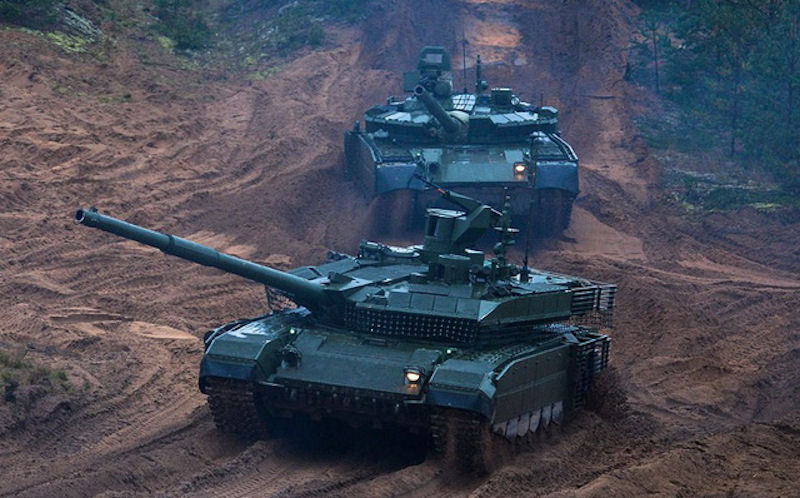
They were able to do this because, while kill drones are excellent tools of positional war, their low rate of fire is a serious drawback in maneuver war - and the Ukrainians configured their entire defense around them!
The Russians simply accepted the losses to bull through.
The Russians simply accepted the losses to bull through.
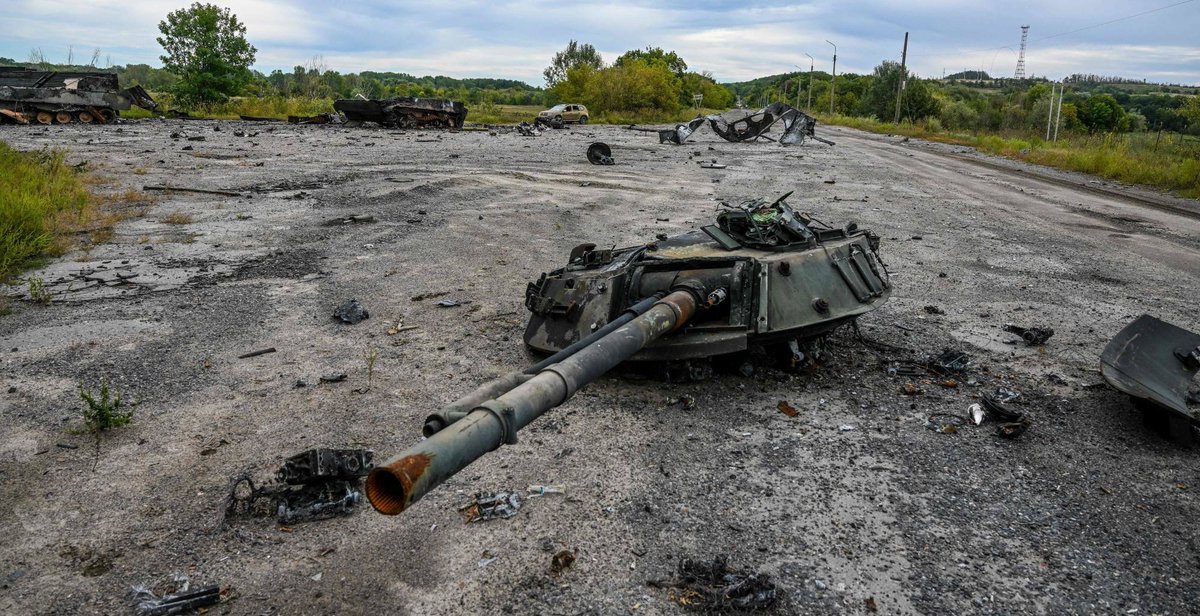
So why hasn't this happened yet?
Well, the Russians have needed to develop tactics and techniques to actually do this while gaining the superiority in troop strength needed for a large-scale offensive.
Such a decisive attack has only become possible, I believe, as of this year.
Well, the Russians have needed to develop tactics and techniques to actually do this while gaining the superiority in troop strength needed for a large-scale offensive.
Such a decisive attack has only become possible, I believe, as of this year.
As an aside, I've been of the opinion for some time that a determined regimental attack will break through the Ukrainian defensive line and into open country. I'm quite happy to see what was formerly a hunch borne out by detailed analysis.
• • •
Missing some Tweet in this thread? You can try to
force a refresh








